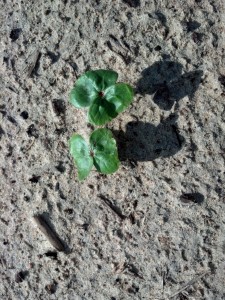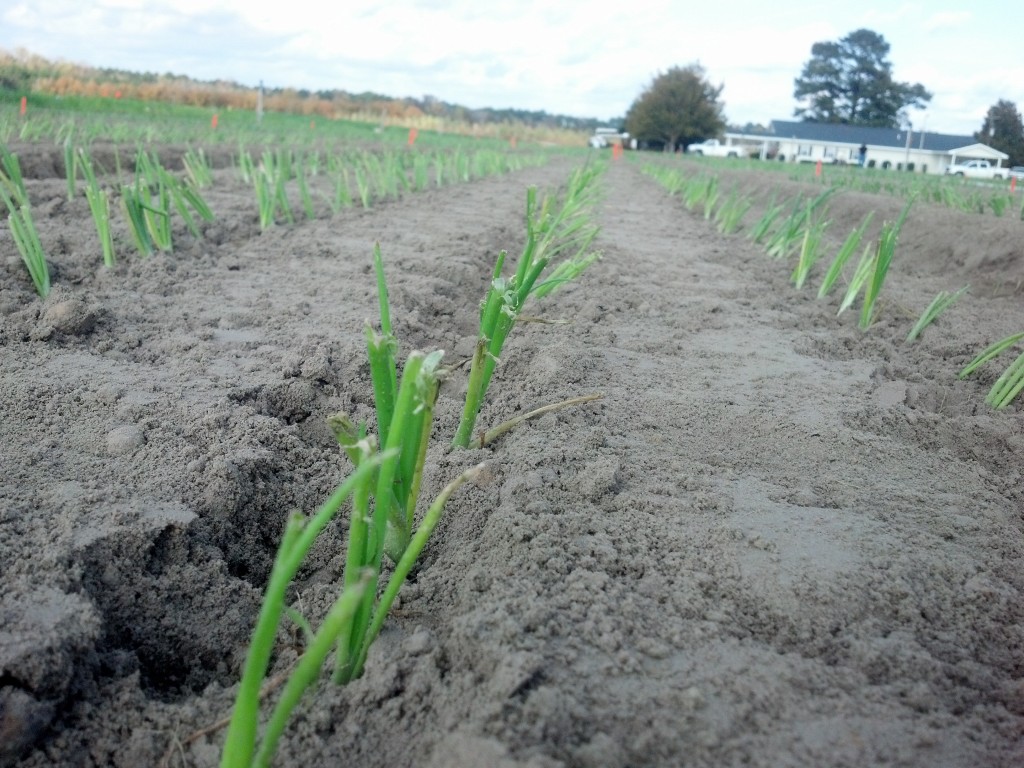
Above you can see some young cotton that has just come up in the last few days. It had to endure some cold rains and cooler weather while trying to emerge, but most of it looks good. As you can see in the picture, there are 2 plants coming up together. This grower is using the “hill-drop” system, where he is planting 2 seed together every 10 inches. He used Warrant and Reflex behind the planter for his pre-emergent herbicides. He will follow up with Roundup or Liberty plus another residual herbicide soon, probably within about 2 weeks, to make sure he overlaps his residual herbicide barrier to prevent weeds, especially pigweed. If needed, he can add a treatment for thrips with this.

We need to be monitoring our cotton for thrips, especially early in the season. When thrips feed on cotton, the leaves will have a “crinkled-up” appearance. The treatment threshold for thrips is 2-3 per plant, with immatures present. We generally expect thrips pressure to be higher in early planted cotton in conventional tillage. Most seed treatments will give us some protection, but as a general guideline, unless thrips pressure is low, cotton planted before May 10th in conventional tillage should receive a foliar thrips insecticide when a neonicotinoid seed treatment is used. Many times this treatment can go out with the first herbicide sprays, which need to go out about 14 days after planting for best pigweed control.
